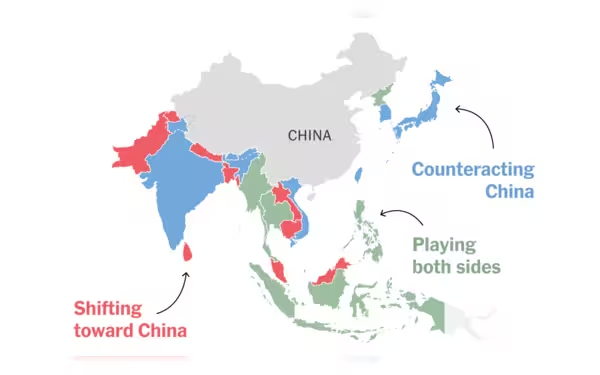Sunday, July 7, 2024 01:39 PM
US Strategy in Southeast Asia: Countering China's Influence
- US focuses on intelligence-sharing, presence, and multilateralism in Southeast Asia
- Initiative aims to increase transparency and counter Chinese influence
- US seeks to strengthen relationships and shape favorable perceptions in the region
 Image Credits: The New York Times
Image Credits: The New York TimesThe US is strategically countering China's influence in Southeast Asia through intelligence-sharing, presence, and multilateralism to enhance trust and partnerships amidst great power competition.
Southeast Asia's perceptions of the great powers are currently heavily influenced by China's economic, political, and strategic power, as highlighted in a recent report by the Yusof Ishak Institute in Singapore. This has significant implications for the US, which aims to enhance trust and partnerships in the region amidst intense great power competition.
To achieve this goal, the US is focusing on three key pillars: intelligence-sharing, presence, and multilateralism. By establishing an intelligence-sharing network with key allies and partners in the Indo-Pacific region, including Canada, Japan, South Korea, Australia, and ASEAN member states, the US aims to increase transparency and communication regarding Chinese tactics. This initiative not only aims to counter Chinese influence but also to demonstrate the US's commitment to being a reliable strategic partner.
Furthermore, the US seeks to change prevailing attitudes towards the great powers in Southeast Asia by emphasizing the benefits of multilateralism. By working closely with regional partners, the US hopes to shift perceptions and showcase the advantages of collaborative approaches in dealing with China's growing influence.
In conclusion, the US's strategic focus on intelligence-sharing, presence, and multilateralism in Southeast Asia reflects a proactive approach to addressing the challenges posed by China's expanding power. By engaging with allies and partners in the region through these key pillars, the US aims to strengthen relationships, enhance security cooperation, and shape a more favorable perception of its role in the Indo-Pacific.













